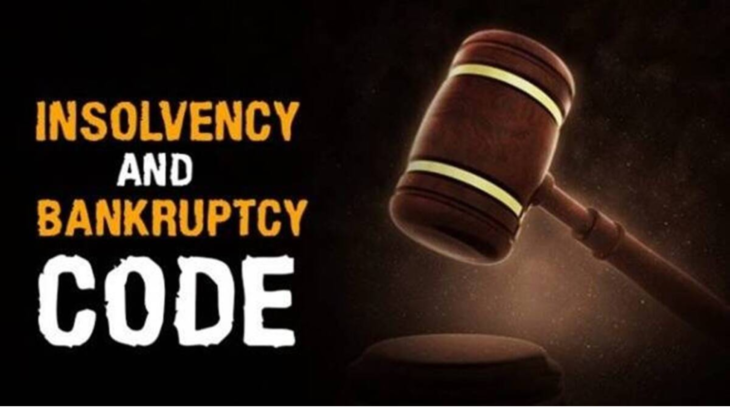Welcome to our comprehensive guide on the insolvency and bankruptcy code. In this article, we will delve into the intricacies of this important legal framework and shed light on its impact on the financial landscape. Whether you are an individual seeking to understand your rights in times of financial distress or a business owner navigating the complexities of insolvency, this guide will provide you with valuable insights and answers to frequently asked questions. So, let’s dive right in
Understanding the Insolvency and Bankruptcy Code
The insolvency and bankruptcy code, often referred to as IBC, is a legislative framework that aims to streamline and expedite the resolution process for insolvent individuals and businesses in India. Enacted in 2016, the IBC represents a significant shift in the country’s approach to handling financial distress, providing a single platform for all insolvency-related matters.
How does the Insolvency and Bankruptcy Code work
Under the insolvency and bankruptcy code, when an individual or a corporate entity fails to repay its debts, it can undergo a resolution process. This process is overseen by the National Company Law Tribunal (NCLT) for companies and the Debt Recovery Tribunal (DRT) for individuals. The code aims to maximize the value of the insolvent entity by facilitating the resolution, reorganization, or liquidation of its assets.
Key Objectives of the Insolvency and Bankruptcy Code
The insolvency and bankruptcy code is designed to achieve several crucial objectives, including:
Speedy Resolution: The IBC seeks to expedite the resolution process, reducing the time taken to resolve insolvency cases and minimizing the burden on the judicial system.
Maximization of Asset Value: By maximizing the value of the insolvent entity’s assets, the IBC aims to ensure fair and equitable distribution of proceeds among stakeholders.
Balanced Approach: The code aims to strike a balance between the interests of creditors and debtors, providing a fair mechanism for debt recovery while safeguarding the rights of the debtor.
Promotion of Entrepreneurship: The IBC encourages a culture of entrepreneurship by providing a supportive environment for businesses to take risks, knowing that a robust insolvency framework exists to handle potential failures.
The Insolvency and Bankruptcy Code in Action
To better understand the practical implications of the insolvency and bankruptcy code, let’s consider a hypothetical scenario involving a struggling business, Reliance Industries.
Reliance Industries, a manufacturing company, finds itself unable to repay its mounting debts due to a prolonged economic downturn. Faced with insolvency, the company decides to initiate the resolution process under the IBC.
Initiation: The resolution process commences when Reliance Industries submits an application to the NCLT. This application provides details of the company’s financial distress and the proposed resolution plan.
Appointment of Resolution Professional: Upon acceptance of the application, the NCLT appoints a resolution professional to oversee the proceedings. The resolution professional takes charge of the company’s operations, working towards the formulation and implementation of a viable resolution plan.
Resolution Plan: The resolution professional, in consultation with the stakeholders, formulates a plan to revive the business. This plan may involve restructuring the company’s debt, attracting potential investors, or selling certain assets.
Creditor Approval: The resolution plan is presented to the creditors for approval. If the plan receives the required majority vote, it is considered accepted and implemented.
Resolution or Liquidation: If the resolution plan is successfully implemented, Reliance Industries undergoes a revival, allowing it to continue its operations while repaying the restructured debt. However, if the plan fails or the creditors reject it, the company may face liquidation, and its assets are sold to repay the outstanding dues.
FAQs- The Insolvency and Bankruptcy Code
Q. What is the role of the National Company Law Tribunal (NCLT) in the insolvency process?
Ans- The National Company Law Tribunal plays a crucial role in the insolvency process. It is responsible for admitting or rejecting insolvency applications, appointing resolution professionals, overseeing the resolution process, and ensuring the equitable distribution of proceeds among creditors.
Q. Can an individual file for insolvency under the insolvency and bankruptcy code?
Ans- Yes, individuals facing insolvency can file for insolvency under the IBC. The Debt Recovery Tribunal (DRT) handles individual insolvency cases, providing a mechanism for debt recovery and resolution.
Q. How does the insolvency and bankruptcy code protect the rights of creditors?
Ans- The IBC establishes a clear and defined process for debt recovery, ensuring that the rights of creditors are protected. Through the resolution process, creditors have the opportunity to maximize their recoveries and participate in the decision-making regarding the revival or liquidation of the insolvent entity.
Q. What happens to the employees of an insolvent company?
Ans- The insolvency and bankruptcy code prioritizes the welfare of employees. In the event of a resolution or liquidation, the interests of employees, such as unpaid wages or provident fund contributions, are given due consideration.
Q. Can an insolvent individual or business apply for multiple resolutions simultaneously?
Ans- No, an insolvent individual or business cannot apply for multiple resolutions simultaneously under the insolvency and bankruptcy code. The code focuses on ensuring a streamlined and efficient resolution process, discouraging parallel proceedings that may hinder the objective of timely resolution.
Q. How does the insolvency and bankruptcy code impact the banking sector?
Ans- The IBC has had a significant impact on the banking sector by strengthening the mechanisms for debt recovery. It has encouraged banks and financial institutions to lend with greater confidence, knowing that there is a robust legal framework in place to address defaults and resolve insolvencies effectively.
Read More –

